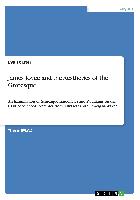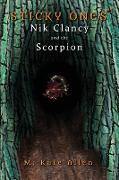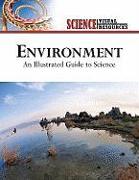James Joyce and the Aesthetics of the Grotesque
BücherAngebote / Angebote:
Thesis (M.A.) from the year 2006 in the subject English Language and Literature Studies - Literature, grade: 1, 0, University of Stuttgart (Institut für Literaturwissenschaft: Neure Englische Literatur), language: English, abstract: With regard to early criticism, James Joyce continued to feed his reputation as artiste maudit with Ulysses and crown it with Finnegans Wake. The reception of both books, as that of Joyce's preceding works, was rather hostile . For the popular press, Joyce proved through Ulysses to have specialized in a "literature of the latrine" , rejecting the book as "chaotic" and "totally unmoral" - expressions of disapproval which quite obviously situate Ulysses in the tradition of the grotesque.
But Joyce should carry his experimental achievement even one step further: Finnegans Wake (1939) is one of the notoriously most difficult literary works of modernism, "supplying scholars, critics and theorists simultaneously with what is both a Pandora's box and a cornucopia of stimulants" . Lacking any kind of traditional concepts of structure, it has an inconsistency and a vagueness that make it hard to pin down a coherent plot or get a definite notion about the characters who undergo frequent transformations . Yet the "carnival of linguistic vivisection" and the numerous transformations are precisely the features of the "Wake" which grant it its "humor of the incongruous and the grotesque" .
A grotesque style of writing was taken up by many modernist authors, such as Franz Kafka, Elias Canetti, or Djuna Barnes, to name only a few. Joyce insofar differs from them that his writing cannot be called grotesque per se, nevertheless the grotesque is an important component of Joyce's two major works, wherefore the aim of this paper is to examine these grotesque tendencies and paradigms in Ulysses and Finnegans Wake. Due to the structural vagueness of the latter, the investigation of narratological aspects will be mainly restricted to Ulysses, in which for example, next to the continuous depiction of the gross physicality of the human body and the main characters' tendency to a perception marked by the grotesque, especially the 'Circe' chapter contains a wide range of grotesqueries. However, the question of grotesque language will be of particular interest with regard to Finnegans Wake. So, the literary representation of the body (chapters 4.1., 4.2. and 5.1.), character perception (chapter 4.1.), the creation of grotesque contexts (chapter 4.3.), and the language of the grotesque (chapter 5.1.) are the vertices which mark the realm of this examination.
Folgt in ca. 5 Arbeitstagen




